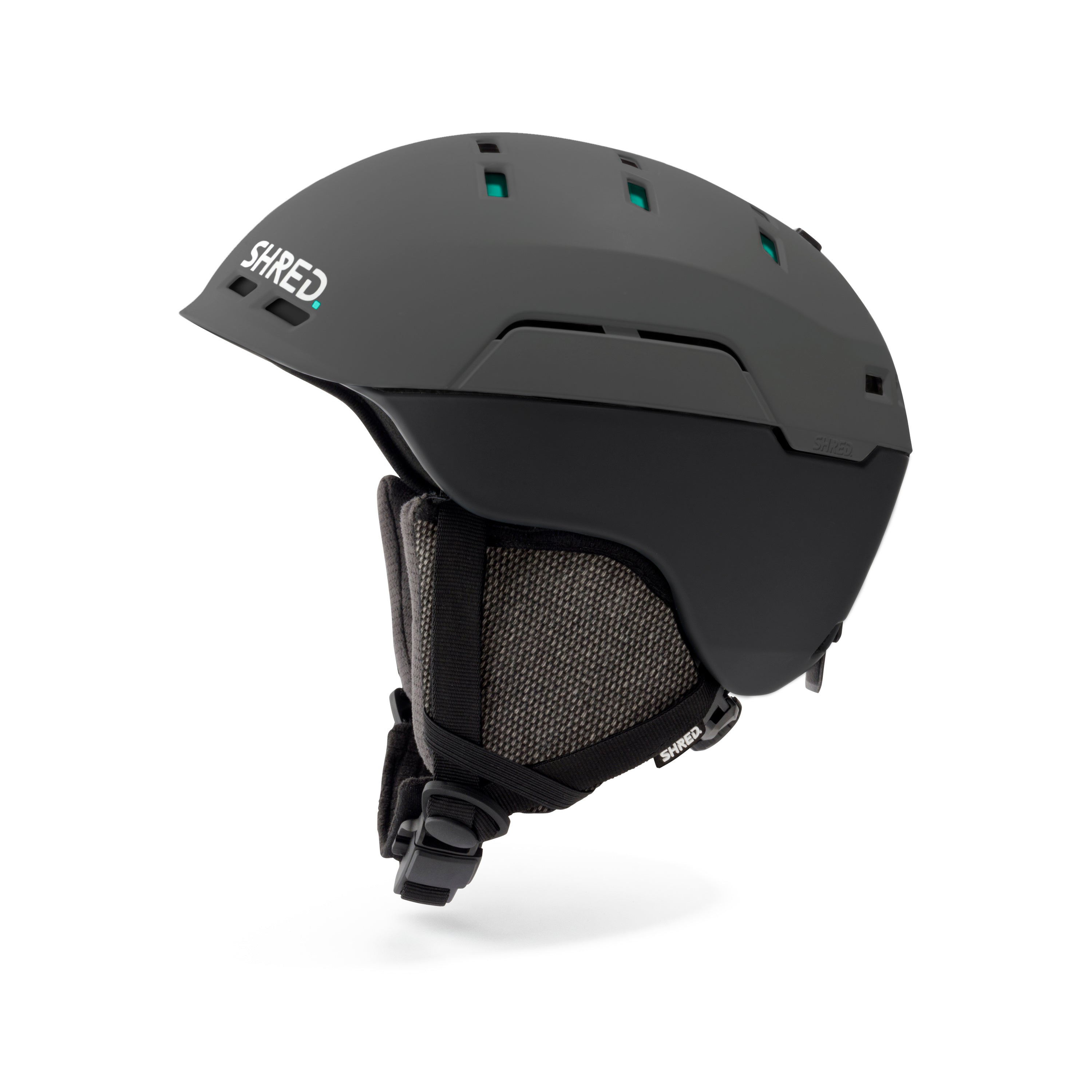
The early days of SHRED. were no different from most brands – a sea of plastic packaging. Goggles lived in clear PVC boxes, helmets in bulky paper affairs with separate plastic bags for manuals, and everything else got wrapped in plastic. The logic? Customers needed to see what they were buying.
We saw a problem, 10 years before everyone else. This packaging, quickly discarded, wasn't what it needed to be. As a small brand, we felt like pioneers venturing into uncharted territory when we started questioning and pushing suppliers for lower-impact alternatives. We knew the path we wanted for SHRED., and to reduce our impact, but sourcing these elusive materials and convincing partners of our vision proved challenging.
The first step was eliminating unnecessary elements – the plastic bag for the helmet manual, the extra plastic liner bag. We swapped the clear PVC goggle box for paperboard with a compostable window. It was a step forward, but not the final solution – recycling still required separating the window. So, we took a leap and ditched the window altogether, opting for a plain recycled paperboard box. We convinced stores that trust came from clear communication on printed labels, not a peek-a-boo window.
This initial success fueled our "Minimal Packaging" philosophy. Every component had to serve a purpose. We replaced the wasteful foam goggle bag with a reusable option that could hold the spare lenses – or even the goggles. Plastic bags? Out. Paper bags? In. We're also transitioning all paper and paperboard to FSC-certified sources. Even box sizes are meticulously designed to reduce volume and minimize the carbon footprint of shipping.
The journey continues. While most of our packaging is now single-use-plastic-free, a small number of products still include mixed materials or minor plastic components that are actively being redesigned. This is not a one-time fix, but an ongoing evolution. Come SHRED. with us.
Elena Salmini, Product Director of SHRED., Materials Engineer, and Packaging Expert

FAQs:
What specific challenges did SHRED. face when convincing suppliers and partners to adopt more sustainable packaging practices?
In convincing suppliers and partners to adopt more sustainable packaging practices, SHRED. faced challenges such as finding sustainable materials that were both cost-effective and met our packaging needs. Some suppliers and partners initially resisted change due to concerns about the durability, cost, and availability of lower-impact alternatives. We invested time in educating and demonstrating to our suppliers the long-term benefits and market demand for sustainable packaging to overcome this resistance.
Are there any plans to make the small plastic components that are still present in some products more sustainable, and if so, what alternatives are being considered?
For the small plastic components still present in some of our products, we are actively exploring sustainable alternatives. This includes considering the use of recycled plastics, which reduce the environmental impact compared to new plastics, and researching biodegradable materials that break down without harming the environment. We are also assessing product redesigns to minimize or eliminate the need for these plastic components. Our commitment to being 100% plastic-free drives us to thoroughly assess the viability and impact of these alternatives to ensure they align with our sustainability goals without compromising product quality.
How is SHRED. ensuring that the transition to eco-friendly packaging does not compromise the protection and safety of the products during shipping?
Ensuring that the transition to lower-impact packaging does not compromise the protection and safety of products during shipping is a critical priority for us. We are conducting rigorous testing of our new packaging materials to ensure they offer the same level of protection as traditional packaging. This includes using recycled or FSC-certified paper that is structurally strong and incorporating innovative design elements for additional support and cushioning. We are also experimenting with new packing techniques that optimize space and provide extra security for products during transit, maintaining our commitment to product safety while embracing lower-impact practices.
Lens Film Note: The removable protective film on our lenses is part of the lens manufacturing process, not extra packaging. Please recycle it along with the paper tab (separately).























































































Leave a comment
This site is protected by hCaptcha and the hCaptcha Privacy Policy and Terms of Service apply.